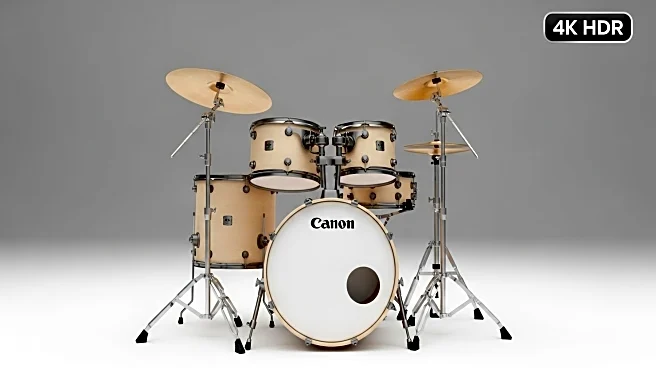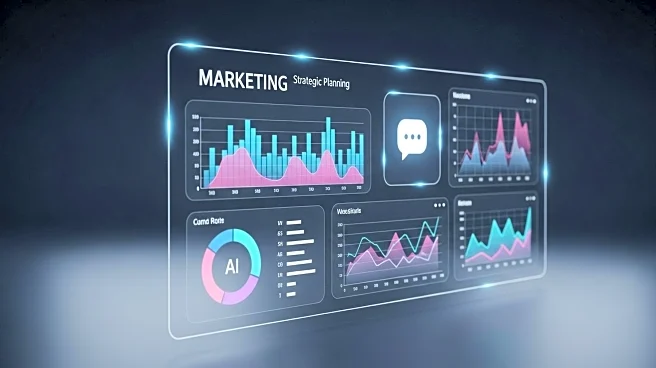What's Happening?
The Code and Theory Network recently demonstrated the power of AI tools in creative campaign development during The Drum Live event. Utilizing Lightricks' LTX Studio AI tools, the network engaged in a 48-hour sprint to transform a brief into a market-ready campaign. This exercise highlighted the role of discomfort and rapid decision-making in fostering creative growth within the industry. Laurel Burton, CEO of Instrument, likened the process to learning to drive a stick shift car, emphasizing the importance of vulnerability and experimentation. The event featured agencies such as Code and Theory, Instrument, and Kettle, who competed to reinvent ServiceNow's 'Put AI to Work for People' campaign. The winning team used office objects to creatively illustrate how AI automation can free humans to focus on work they love. This approach marks a shift from traditional perfectionism to embracing experimentation and intuition.
Why It's Important?
This development signifies a transformative shift in the creative industry, where agencies are moving away from polished perfectionism towards embracing experimentation and intuition. The use of AI tools in campaign development allows for rapid prototyping and creative extensions, which can lead to more innovative and effective marketing strategies. This change reflects evolving client expectations, as they increasingly seek belief, curiosity, and experimentation over rigid processes and systems. The emphasis on discomfort and rapid decision-making can unlock new ideas and drive growth in a fast-changing industry landscape. As AI continues to integrate into creative processes, agencies may find new ways to leverage technology for more impactful storytelling and client engagement.
What's Next?
The success of the VibeSprint challenge suggests that similar events and initiatives may become more common in the industry, encouraging agencies to adopt AI tools for creative development. As agencies continue to experiment with AI-driven processes, they may discover new methodologies for campaign creation that prioritize speed and innovation. The industry could see a broader adoption of AI tools, leading to a redefinition of creative roles and processes. Stakeholders, including clients and agencies, may need to adapt to these changes by fostering environments that support experimentation and rapid iteration. The Drum TV plans to release a full video of the VibeSprint challenge, which could further spotlight the evolving creative landscape.
Beyond the Headlines
The integration of AI tools in creative processes raises ethical and cultural considerations, particularly regarding the role of human creativity versus machine-generated content. As AI becomes more prevalent, agencies must navigate the balance between automation and human input, ensuring that technology enhances rather than replaces human creativity. This shift may also influence cultural perceptions of creativity, as audiences become more accustomed to AI-driven content. Long-term, the industry may experience shifts in job roles and skill requirements, with a growing emphasis on AI literacy and adaptability. Agencies will need to address these challenges to maintain ethical standards and cultural relevance.










